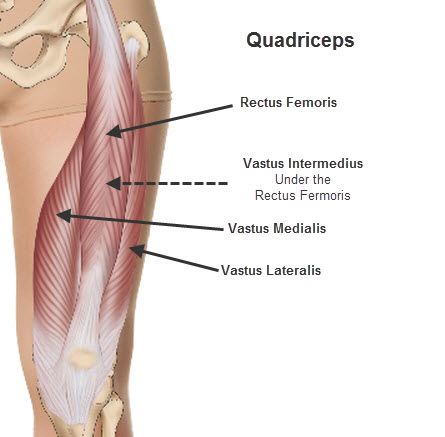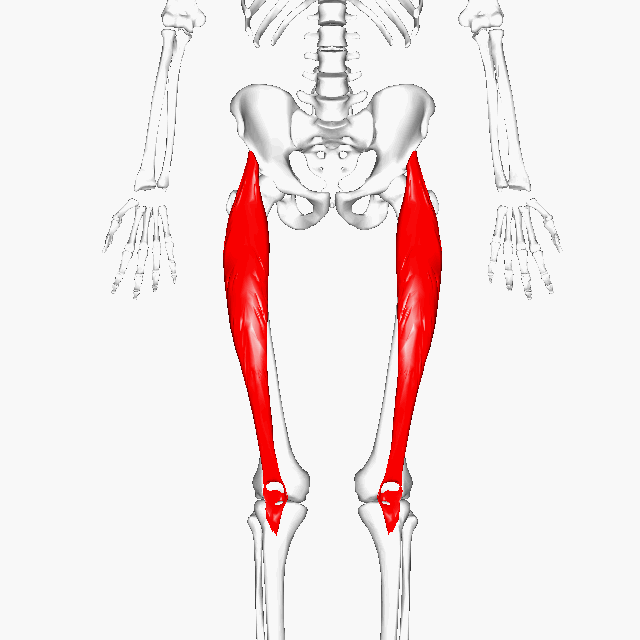Don’t underestimate the impact a set of tight quads can have on your lower back. Your quads are some of the strongest muscles you have on your body and can produce tons of power if needed. Just like any other muscle group, your quads can get overworked and become your worst nightmare when it comes to balancing your hip and stabilizing your spine. Today, we’re going to cover how to test for tight quads, how they impact your back pain and the easiest way to get lasting relief.
Around here we believe that pain meds and surgery are the bottom of the barrel kind of choice. If you’re tired of pain meds doing nothing but increase in cost and dosage and are willing to do everything you can to stay off the surgery table, then this place is for you. We cover all aspects of your life that are directly related to bringing relief to your back pain and giving you a better quality of life.
Attention desk jockeys and commuters! If you find yourself sitting more than anything else i highly recommend you adding this Release WOD into your DAILY routine.
Today specifically we are focusing primarily on what the quads do, how to test for chronic tightness and how you are going to correct any tightness you have.
Some of the links below are affiliate links of products that I personally use and stand behind 100%
What muscles make up the quads?
Just in case you didn’t know.
The quads are a set of 4 muscles that take up shop on the front of your thighs. Their names are the Rectus Femoris (my personal favorite and the most destructive to your back), Vastus Medialis, Vastus Lateralis , and this little guy named Vastus Intermedialis.
All 4 quadriceps work together to keep you upright and successfully doing other things like walk and run. They really are your best friend until you piss them off. Well, not all of them but one guy in particular (Rectus Femoris) can really do some damage.
When it comes to the quads, the Vastus Medialis, Vastus Lateralis and Vastus Intermedialis stick to working with one joint. The knee.
The Rectus Femoris on the other hand goes from the anterior crest of your pelvis (hip bone) all the way to the upper portion of your shin bone. That means this guy is working over two joints!

Why do over tight quads matter?
The culprit.
The benefit to un-glueing over tight quads is that you will typically hit all 4 muscle at the same time. For the sake of this article, I am going to highlight one of the main culprits.
The Rectus Femoris.

Take a look at the impact this muscle can have on the hip and low back. For one, it attaches to the anterior portion of the hip which means it plays a roll in flexing the hip. If you have tight quads you better believe this guy is cranking down on your hip and possibly pulling your hip out of balance.
That’s not all.
Secondly, throw in disc degeneration or any inflammation in your lower back and this tilted pelvis caused by a tight quad muscles will only add to the irritation and pain in your lower back.
The job most people don’t really think much about when it comes to the quads is balance. These guys work hand in hand with the hamstrings. Think of the quads and hamstrings as the Bonnie and Clyde of the lower body. They both need to be balanced and firing on all cylinders if they are going to do their job well. If the quads work too hard, the hamstrings will back off and create issues both up and downstream. In this case specifically, the imbalance between these two groups of muscle hit hard on the lower back.

So, we know how tight quads can cause imbalances in our lower body and lead to an increased risk of having back pain. We also know that it’s not necessarily the entire set of quad muscles that are the issue but mainly one quad muscle (Rectus Femoris) that needs most of our attention. Now, lets see how to test for any issues.
How to test for tight quads:
I hate when people talk about a muscular issue and go so far as to give you the info you need to correct it but they never show you how to see if you actually have the issue to begin with.
That’s just a big waste of time if you don’t even have tight quads to begin with.
The test you’re going to see below is called the Elys Test. It’s actually used by therapists on a day to day bases. The cool thing about the Elys Test is you get to do it for FREE without even leaving your home.
Your goal when testing quad tightness is not to get to a certain number. It’s more about how your lower back and quads responds to the test. Yes, there are some obvious signs of tight quads but for this test specifically we are looking for comfort and reaction in your lower back.
Grab a buddy, your wife, husband or even child and have them do this test on you. Worst case scenario you can do it on your own but it will take a little creativity.
Recap: Ely’s Test
(Doing it by yourself)
To test for tight quads simply take off your shoes and lay on your belly with some kind of rope or band around the ankle of the leg you want to check first.
Pull the rope so that your heel is coming towards your butt. Be sure the travel path of the leg is straight and not off to the side or some other weird angle.
Stop as soon as you begin to feel tension in your quads or discomfort in your lower back.
If you have a buddy you could have them do all of this for you along with take measurements of the space between your heel and butt when you are in the flexed position. You can use this measurement as a re-test starting point or a simple reference when looking at improvement.
Time out: There are 6 other major players when trying to rehab a bad back. If you haven’t gotten them yet don’t leave without picking them up HERE!
Fixing your over-tight Quadriceps
The goal now is to get your tight quads to release and hopefully bring relief to your lower back. I typically have a 5 step process to any tight muscle.
Step 1: Warm the muscle by either taking a hot shower or doing some kind of active warm up such as jump rope, walking or jogging.
Step 2: Do tissue release using tools like a foam roller, softball, LAX ball, kettle bell or even a weight plate. Whatever allows you to really dig into those troubled spots and break up some of that tissue.
Step 3: Take the muscle through 1 or 2, 2 minute stretch holds while focusing on deep full breathsStep 4: Take the muscle through a basic range of motion drill to check for improvement (remember we aren’t investing the time in this stuff just to look cool. We want results!)
Step 5: If you are confident in your quad diagnosis, add the two treatments below to your daily routine 1-2x a day minimum.
Remember the 3 Keys to getting results from foam rolling
- Go slow and allow the foam roller to plow through (like an ice breaker ship on a frozen body of water) the knotted muscles NOT just roll over them.
- Don’t resist the force of the foam roller. In other words, don’t resist the discomfort or pain your feeling. Clear your mind and allow the discomfort to happen. Only at this point will your body allow the work you’re doing to actually have an impact on the muscles you’re targeting.
- Take deep full belly breaths while working.
After I spend some time breaking up the tissue i’ll hit 1 or 2 basics stretches. I don’t like doing a lot of fluff when it comes to this point in my Release WOD. I usually pick the most beneficial stretch I know of and hit that for a few minutes.
In this case when it comes to dealing with tight quads I typically will stick to the couch stretch. This has never let me down and always yields the best results. Another awesome benefit to this stretch is it incorporates the rest of hip flexors as well.
Quad Stretch Recap:
When doing the stretch seen in the video, DO NOT allow your self to go into extension. You want to be able to maintain a neutral spine while working on the quads. The goal isn’t to see how FAST you can get to the point where your back is against the wall. Your goal is to release the quads. The byproduct of this release will be a more comfortable upright posture. Earn that, don’t force it.
Another point to consider is maintain a tight glute contraction on the leg that is up against the wall. This will help in keeping your pelvis in a comfortable and stable position without sacrificing the lower back. It’s actually pretty tough to really squeeze your but with your leg in this position so use your hand and press on your glutes as you try to contract them to really see how well your doing.
Do this 2x a day
Foam Roll: 2-3 Minutes each quad. Go slow and use the TACK and PULL technique I talk about in the video on all tight spots.
Tissue Release: For some extra curricular work try the video below. 2-3 minutes for each quad.
Couch/Wall Stretch: 3 minutes minimum for each quad.
Congratulations, you just went through a high dollar assessment and basic rehab prescription 100% FREE of charge.
This is the ticket guys. Not everyone has tight quads and not everyone has back pain because of tight quads but this gives you the opportunity to test your self for any kind of imbalance that needs to be addressed. Have confidence in your ability to treat your own back pain!
Typically desk bound individuals suffer from over tight quads so if this is you get on he floor and get tested. You don’t have to workout to have tight quadriceps!
To your relentless pursuit of a drug and surgery free recovery plan!
William


Thank you for the time and effort to put together this information. I’m going to give these a try.